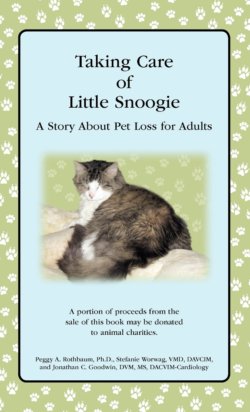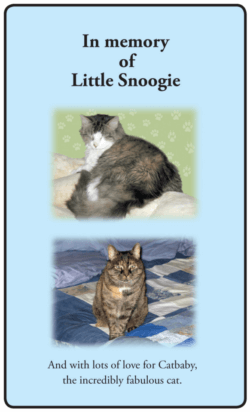I’ve been an activist since I was a child. I saw injustice all around me and couldn’t get a satisfactory answer from the adults as to why it had to be this way and couldn’t be made right. This unsettled me.
Fast forward. For the past 20 plus years I have been doing healthcare writing and advocacy. Although I collaborated with people sometimes, most of the time I was solo. It was lonely and stressful. For years, I felt that I was one of the few people who saw and understood that we have a terrible healthcare crisis in this country. I set some goals for myself, and reached them. I tackled the problem from every angle that I could. In time, there just wasn’t anything else for me to do. I also knew, with increasing certainly over the past few years, that I couldn’t keep it up much longer, or as I kept saying, “It’s going to kill me.” I got lucky in that I was able to pass the baton to local healthcare activists who can carry it the rest of the way. I’m almost done with this work.
How I became an advocate for nonhuman animals

Though I feel burnt out on healthcare advocacy, I’ve been looking forward to transitioning to advocating for an issue that has become very close to my heart—nonhuman rights. Nonhuman animals can’t advocate for themselves, so we have to do it for them. The inhumanity, if you will, of the way that they are often treated is intolerable to me. It infuriates me.
It took me a while to understand how terrible it can be for members of other species because of humans. As a child, my naïveté carried me. It was explained to me that “shelters” (very different back then) were exactly that—they took care of animals until a nice home could be found for them. Circuses made me sad, because the clowns and the other people looked so sad. But, again, I was told that the animals were well cared for. I needed, in my own budding child activist mind, to believe that this was true. As a young adult, I became aware of organizations that protect animals, and so I guess that I wanted to believe, as I was absorbed in other issues, that all this was true. In time, I began to realize, in part because all animals are considered legal “things,” that none of it was, never mind the fact that they don’t belong in these awful situations in the first place.
As I am winding down my healthcare advocacy work and have more time to devote to animal issues, I have become more aware of the details of the lives of our nonhuman animal friends and therefore more and more frustrated and upset to know that every day, every second, nonhuman animals experience injustice and cruelty they can’t escape and we can make stop. As I embark on this new advocacy endeavor, I’m aware that it has the real potential to burn me out, more so than anything else that I have ever done. This is precisely because of nonhuman animals’ vulnerability and their inability to advocate for themselves.
What is burnout?
Burnout comes from strong emotions that go on for too long with no resolution or comfort. Emotions are too strong, too intense, too unpleasant, or too difficult. Burnout is often accompanied by feelings of exhaustion or disillusionment. People can resolve and recover from burnout with support, rest, and increased reflection.
Burnout is not a new concept. It‘s been around for a long time and has been called various names such as: compassion fatigue, battle or combat fatigue, shell shock, drained, nervous breakdown, crack up, shattered nerves, fall apart, emotional collapse, nervous exhaustion.
Over the last several decades, I’ve conducted seminars on “managing stress and avoiding burnout” for a range of professionals. There is a long list of people who are can be susceptible to burnout. It includes artists, nurses, physicians, veterinarians, soldiers, museum workers, firefighters, lawyers, teachers, psychologists, and other mental health workers.
It’s more or less the same for anyone involved in helping anyone doing anything. Researchers (Paul Gorski and colleagues at George Mason University) have organized burnout symptoms into five categories:
(1) affective manifestations, characterized by changes in mood, often related to depression and anxiety;
(2) cognitive manifestations, characterized by lags in attention, memory, and concentration;
(3) physical manifestations, characterized by health challenges such as headaches, high blood pressure, and illnesses;
(4) behavioral manifestations, characterized by behavioral changes that impact productivity and health, ranging from increased procrastination to substance abuse; and
(5) motivational manifestations, characterized by diminishing drive and increased feelings of alienation and despondency.
Gorski and his colleagues have conducted research, including personal interviews, with hundreds of activists in scores of countries. They found that activists are particularly at risk for burnout. They put pressure on themselves to have a significant impact on the world around them. Activism requires activists to develop a deep understanding of overwhelming social conditions related to suffering and oppression—conditions that society as a whole often is unable or unwilling to face. In addition, activists do not adequately look out for their own well being. Most important and perhaps most disturbing, they found that much of activist burnout is caused, not by the tumultuous times or the resistance activists experience, but by how activists treat other activists.
My personal experiences with burnout
This all makes sense to me. Although there are common symptoms for why animal activists, or any other activists, burn out, we each experience burnout—as we do with all other issues—in our own personal ways. For me, with any kind of burnout or approach to impending burnout, I feel alone, misunderstood, or hopelessly overwhelmed. And I am particularly vulnerable when I feel that the recipient of my activism is particularly vulnerable.
I have also experienced or witnessed the infighting Gorkski and colleagues describe—destructive, competitive behavior on the part of other activists that frustrates me because we are not keeping our eyes on the end goal: helping animals.
There is so much work to be done that there is plenty for everyone. People can develop projects that are of particular interest to them and receive credit for their work. There is plenty of opportunity for creativity. There is no need to undermine the efforts of others. It’s discouraging and detracts from reaching goals. Teamwork is best, because it multiplies the effort by people combining their energy and brainstorming together.
How I manage and prevent burnout
So, as I’ve learned, for me it is important that I connect with other people with the same goals and form coalitions. This makes me feel supported as it addresses my personal issues and vulnerabilities. I feel that I am part of a greater effort, that others care, and that I am not alone, which cuts down on the stress and potential for burnout.

I also limit what I do. I know what I can do emotionally and in terms of time. I don’t volunteer at shelters. It’s too hard for me. I want to take them all home. I don’t go to marches or rallies. I focus on dogs and cats, although all of God’s creatures matter to me. So, I try to form coalitions with people focusing on other species, such as the NhRP. Strength is in numbers and the issues are the same: respect and caring. I try to help others to join in, people who have pieces of what needs to be accomplished on the whole. For example, I’ve connected with Nancy and Matt Falk, who among other accomplishments, helped pass Logan’s Law, which prevents known animal abusers from adopting companion animals from shelters. This is an effective complement to the NhRP’s work, which focuses on nonhuman animals’ legal status as “things” and their lack of legal rights, beginning with litigation on behalf of chimpanzees and elephants. There is something especially compelling about the suffering of nonhuman animals who, like the NhRP’s clients, are so much like us and possibly even more intelligent. They suffer, it’s obvious by looking into their eyes, and we don’t have the right to inflict that suffering on them.
I spend my time, energy, and money where it will do some good for my beloved causes, but also maximize my efficiency and impact to help me to avoid burnout. I try not to make excuses for not being able to do it all. I do activities that will make me feel better as well as benefiting the cause. For example, after one of my cats died, I told my veterinarians that I could either lose my mind, so to speak, from grief, or we could write a book. So we wrote a book, Taking Care of Little Snoogie: A Story About Pet Loss for Adults. It helped me cope, and I also use it to help raise money for animal charities.
Other ways to manage stress and avoid burnout include more conventional stress reduction strategies such as yoga, music, art, spending time with friends and family, turning towards one’s faith, exercising, reading, and gardening. Sometimes psychotherapy is helpful. Animal organizations sometimes offer individual or group support.
For activists, Gorski and his colleagues have found that a combination of individual strategies and group or community support is the best way to avoid burnout. It’s definitely what I do for myself to avoid burning out.
Staying positive despite burnout
Although there is plenty of opportunity to be heartbroken and frustrated when doing animal advocacy, there is plenty of positive and encouraging news as well. Just as is the case with my healthcare advocacy, we can’t save those who have already suffered and we can’t bring back those who have already died. It’s too late for them, and it distresses and angers me. But there are many individuals and organizations working on the problem from every imaginable angle to help animals. There is daily news of progress to be celebrated. And many times, this is what keeps me going. We are all in this together. Together we rise and work to help our nonhuman animal friends.